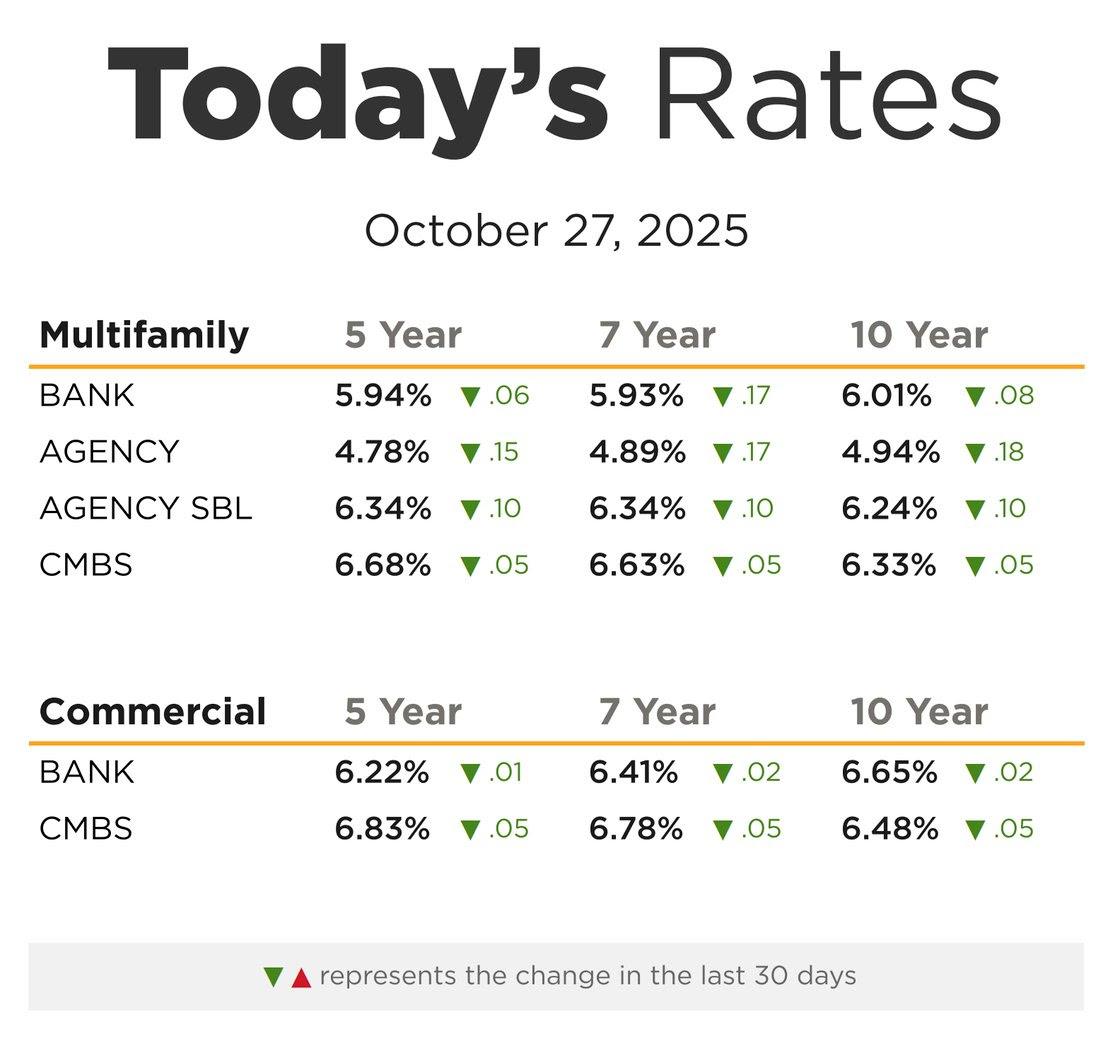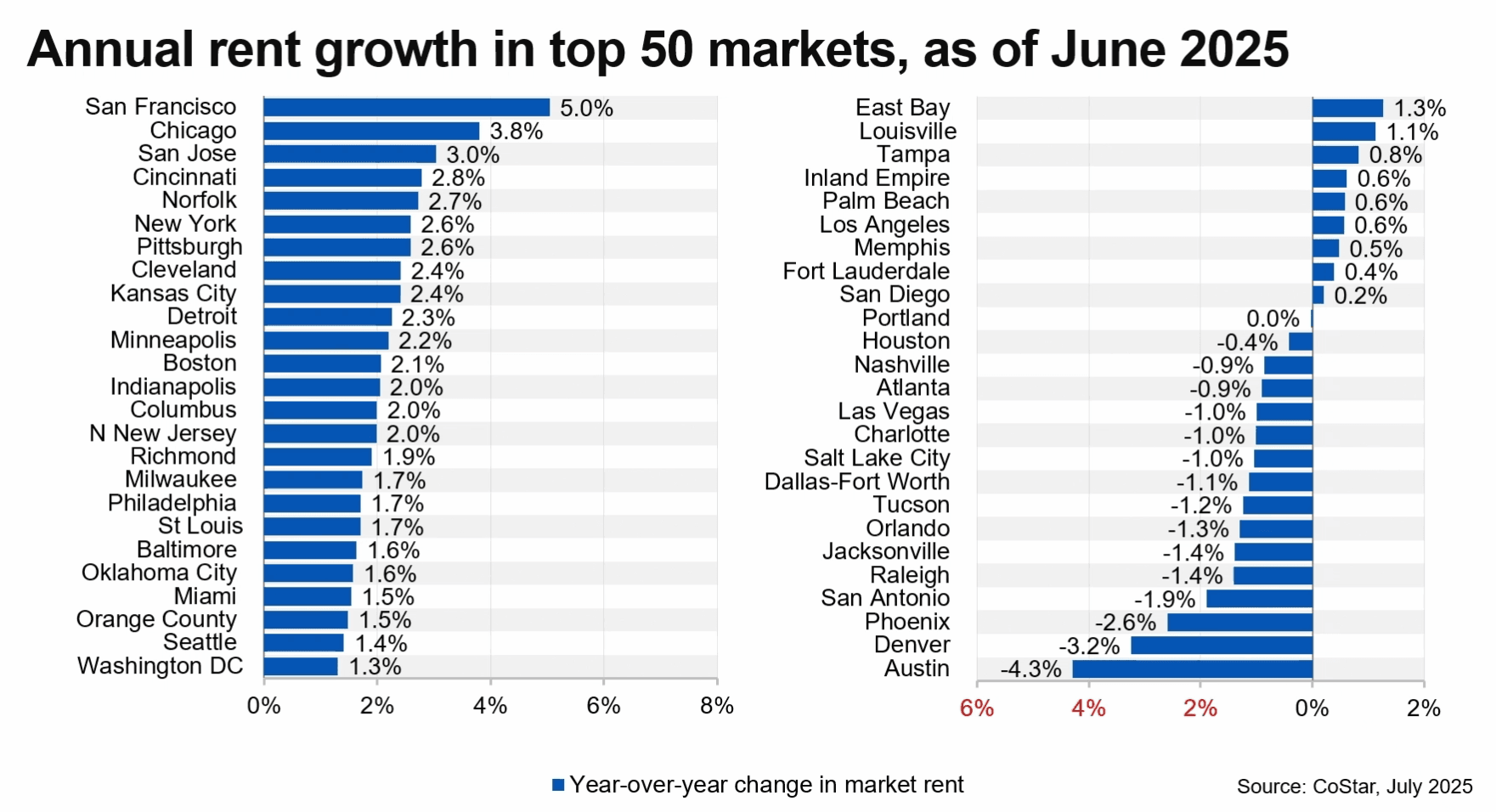The next recession has been predicted for a number of years now without making an appearance, but one of these days, history says, the business cycle will turn. What then for the various types of commercial real estate?
“The commercial real estate sector as a whole is well-positioned for an economic downturn,” said John Chang, Marcus & Millichap research services senior vice president, national director. “The underwriting this cycle has generally been sound and the risk of overdevelopment has been muted at a macro level. A significant factor affecting which property types are positioned best to weather a recession is what causes the recession.”
Even so, some property types are better positioned than others to endure a recession without too much damage, either to valuation or deal velocity.
The properties that are likely to best weather a moderate recession will have four characteristics: good location, strong fundamentals and functionality, modest leverage and modest capital needs, whether as a result of re-leasing costs or otherwise,” said John Sullivan, co-chair of DLA Piper’s Global Real Estate Practice and chair of its U.S. Real Estate Practice.
“With respect to the property types most likely to hold up best, I’d point to apartments, workforce housing, data centers, and industrial/logistics properties,” Sullivan said.
There is certainly a case to be made that the multifamily sector can handle just about anything thrown at it. According to an early 2019 CBRE report, multifamily rents outperformed those of the other major property sector during and after the 2009 recession in three ways: the lowest level of rent decline, the fastest recovery to pre-recession peaks, and the longest post-recession period of rent growth.
“Housing is a basic human need, and apartments and workforce housing could benefit if people are forced to seek lower-cost housing during an economic downturn,” Sullivan said. “During the last recession, apartment rents held up better than rents for most other property types.”
Sullivan added that the resilience of multifamily (and industrial) is consistent with the findings of the recent DLA Piper State of the Market Survey.
Demographics still support the sector. Millennials are now creating households at a historically normal clip, after having lagged expectations for a few years after the Great Recession, according to a new report by the Urban Land Institute and PwC. Among young adults, most new households rent, with rental household formation now approaching 1 million a year, the report says. All but the most severe recession isn’t likely to slow that momentum.
For the multifamily sector, one possible wild card — especially during a recession that adversely affects people’s ability to earn rent money — is the movement for rent control, real estate lender Money360 President Gary Bechtel said. It isn’t clear yet how far the movement will go, and how it will impact markets that have never had it.
“People have to live someplace, and it’s an asset class that investors will continue to flock to, even though cap rates are depressed,” Bechtel said.\The industrial sector has had considerable momentum in recent years as developers and owners suffer from the happy challenge of heightened demand — at least for properties that are part of the logistics of getting e-commerce goods to shoppers’ homes.
Looking ahead, structural shifts in supply chains should continue to add tailwinds to demand that will probably be recession-resistant, the ULI report notes. Several large users of space have publicly said that billions’ worth of investment in their distribution networks is “mission-critical.”
“The industrial market is expected to remain strong despite minimal change in job growth for the construction, manufacturing, transportation and warehousing industries,” Transwestern Research Director Matt Dolly said. “However, there’s some concern about the slow growth of the manufacturing sector.”
In the squishy middle in terms of their resilience to a recession are office and hospitality properties, with some experts putting hospitality a bit on the riskier side.
The office market should benefit from the jobs being added to the professional and business services and financial sectors, Dolly said. IN 340 DAYS! DON’T MISS THE ASCENT 2020 — National 11.1.2020
“There’s a push to create technology jobs in rural areas, which bodes well for small office markets in middle America,” he said.
The office market depends on the macro-level behavior of the millennial generation as that demographic takes more and more of a leadership position in the labor force, driving the demand for office space. All but the worst recession would have little more than a temporary impact on the sector.
According to Marcus & Millichap’s most recent report on the office sector, suburban properties may be the biggest winner of evolving millennial lifestyles. Many millennials are beginning to form families after delaying marriage, and are (like their parents) realizing the appeal of suburban neighborhoods as more affordable housing costs and proximity to quality schools becomes increasingly important.
Suburban housing demand will be bolstered in the coming years amid this lifestyle shift, the report noted, putting further pressure on urban apartment vacancy rates, but also encouraging corporations to set up campuses in suburban employment hubs — thus priming the pump for more demand of suburban office, even in the face of any slowdown in the economy.
Office space leased by medical users also ought to be able to resist recessionary pressures.
“Medical office is another property type that will be supported by a strong demographic outlook,” Chang said.
The demographics, in this case, is the baby boomers, a group that will increasingly need medical attention in the coming years.
Office space that can accommodate healthcare uses will be in demand, slowdown or not. Courtesy of Marcus & Millichap Marcus & Millichap’s John Chang Property types that tend to have high ongoing capital needs, including hospitality assets and office properties where there is substantial re-leasing to be done, are going to fare worse during a recession, Sullivan said.
“Hospitality will be hurt on the sale side, as consumers cut back,” Sullivan said.
“Our industry feels the pain of recessions more than most,” STR Senior Director of Financial Performance Joseph Rael wrote in Hotel News Now. “The impact is strong, broad and immediate.”
Lehman Brothers filed for bankruptcy in September 2008, Rael pointed out, touching off the Great Recession. Revenue per available room, or RevPAR, growth the previous 12 months was 2.5% nationwide, but that September finished down 3.1%.
“Eight months later, in May 2009, monthly RevPAR declines bottomed out at 20.4%,” Rael wrote. “The 12-month period ending October 2009 revealed a devastating 16.8% RevPAR decline.”
At the bottom of the heap, the property type most likely to suffer the slings and arrows of a recession is, unsurprisingly, retail. That is because consumer spending will contract, as is typical for a recession.
But that won’t be the only factor. Overleverage and the U.S. being “over-retailed” have been driving the contraction of retail in recent years, and will continue to do so, independent of ups and downs in the economy or further changes in consumer spending, according to a new report by CCIM. The report makes a fairly radical prediction: One in four malls will close by 2022.
“You can make the argument that big-box retail and the larger malls will especially be hit because people’s shopping habits are changing dramatically, while at the same time they’re temporarily spending less,” Bechtel said.
“Recessions are hard for everyone, but a lot of retail especially isn’t well-positioned to endure the next one, whenever that is.”
Source: October 3, 2019 Dees Stribling, Bisnow National
Receive Market Insights
Periodic analysis on rents, pricing, cap rates, and transaction activity across Chicago and key suburban markets.




Join The Discussion